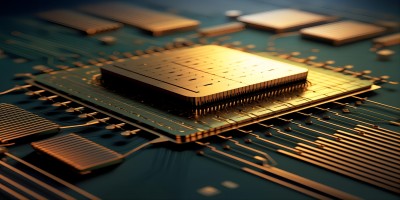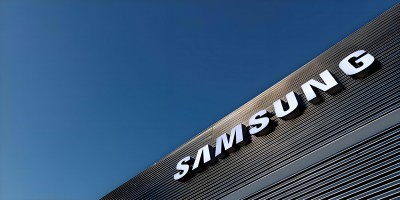1、 Overview
The baseband processor synthesizes the baseband signal to be sent and decodes the received baseband signal. When sending a baseband signal, it compiles the audio signal into baseband code; When it receives a signal, it decodes the baseband code into an audio signal. At the same time, the baseband processor is also responsible for compiling address information, text information, image information, etc.
The baseband processor is a complex integrated SOC. Mainstream baseband processors support multiple network standards, that is, all mobile and wireless network standards, including 2G, 3G, 4G, and WiFi, are supported on one baseband processor. Multimode mobile terminals can achieve seamless roaming between multiple mobile devices and wireless networks worldwide. At present, the basic structures of most baseband processors are microprocessors and digital signal processors. The microprocessor is the control center of the entire chip, most of which use the ARM core, and the DSP subsystem is responsible for baseband processing.

Baseband processor
The baseband processor in smartphones can be understood as a complex SoC chip with multiple functions, and the normal operation of each function is configured and coordinated through a microprocessor. This complex chip is centered around the ARM microprocessor and controls and configures each peripheral functional module around the ARM microprocessor through its dedicated bus (AHB bus), mainly including GSM, WiFi, GPS, Bluetooth, DSP, and memory. Each functional module has its own memory and address space. Their functions are independent of each other. The baseband processor itself has a power management chip.
II baseband processor component

The baseband processor can be divided into five sub blocks: CPU processor, channel encoder, digital signal processor, modem, and interface module.
CPU processor: Control and management of the entire mobile station, including timing control, digital system control, RF control, power saving control, and human-machine interface control. If frequency hopping is used, it should also include control of frequency hopping. At the same time, the CPU processor executes all software functions of the GSM terminal, that is, the first layer (physical layer), the second layer (Data link layer), the first layer (network layer), the man-machine interface (MMI) and the application layer software of the GSM communication protocol.
Channel encoder: mainly completes the channel coding and encryption of service and control information, including convolutional coding, FIRE code, parity Check digit, interleaving, and burst format.
Digital signal processor: mainly completes channel equalization based on Viterbi algorithm and speech codec based on RPE-LPC.
Modem: It is mainly used to complete the modulation/demodulation of Gaussian Minimum-shift keying (GMSK) required by the GSM system.
Interface module: includes three sub blocks: analog interface, digital interface, and human-machine interface.
The network standards supported by mobile terminals are determined by the baseband processor mode, while the frequency bands supported are determined by the antenna and RF module. The baseband processor completes the access function of mobile terminals. The current baseband processor is a highly complex System on Chip (SoC) that not only supports multiple communication standards (including GSM, CDMA 1x, CDMA2000, WCDMA, HSPA, LTE, etc.), but also provides multimedia functions and interfaces related to multimedia displays, image sensors, and audio devices. In order to further simplify the design, the power management circuits required for these compilation circuits are increasingly integrated into them.
III baseband processor SOC architecture
The baseband digital processing function and the basic peripheral functions of the phone are concentrated in a system on chip (SOC), which adopts a microprocessor+digital signal processor (DSP) structure to enhance the processing capabilities of the microprocessor and DSP.
1. The microprocessor is the control center of the whole chip and will run a real-time Embedded operating system (such as Nucleus PLUS).
2. The DSP subsystem is the focus of baseband processing, which includes many hardware throttle and baseband dedicated processing modules to perform all physical layer functions.
With the development of real-time digital signal processing technology, ARM microprocessors (which will use different microseries, with most 3G chips using ARM9), DSP, and FPGA architectures have become the main methods for mobile terminal baseband processors.
Ⅳ ARM architecture family of baseband processor
In the field of chip architecture, X86 and ARM can be said to have been competing for decades, occupying an unshakable position in their respective fields. Among them, X86 dominates the PC chip market, and ARM dominates the mobile terminal chip market. Because of its low cost, low power consumption and high efficiency, ARM architecture family caters to the development trend of many mobile terminal devices, including smart phones.
The following figure shows the logical architecture of a typical ARM based baseband processor, where 3G/4G baseband logic refers to the DSP computing subsystem.

Figure: Baseband processor framework on typical ARM architecture family
1 The microprocessor accomplishes multi task scheduling, inter task communication, peripheral drivers, and communication between the microprocessor and DSP subsystem and other modules through the Real-time operating system RTOS (such as Nucleus PLUS).
The functions also include:
(1) The control and management of the entire mobile station, including timing control, digital system control, radio frequency control, power saving control, etc.;
(2) Complete all software functions, including communication between the physical layer and protocol stack of wireless communication protocols, advanced protocol stacks (TCP/IP, etc.), and if used for functional machines, it will also include human-machine interaction interfaces (MMIs) and application software.
The 2 DSP subsystems are used to process all algorithms in the physical layer, including channel encoding, encryption, channel equalization, speech encoding and decoding, modulation and demodulation, etc. Data communication means between DSP subsystem and microprocessor subsystem include dual port Random-access memory (RAM), multi bus sharing resources (some suppliers use AMBA's multi-layer bus protocol), etc. A multimode multi frequency baseband processor can include multiple DSPs.
In terms of memory organization, both microprocessors and DSP subsystems can have their own independent caches, with shared on-chip SRAM and shared external extended memory. Extended memory typically supports synchronous dynamic random access memory (SDRAM) and NAND type flash RAM.
FLASH ROM can be used to store boot ROM and CP ROM, and to link operating systems and user applications. The ROM interface is mainly used to connect the FLASH ROM of the Stored procedure, and the RAM interface is mainly used to store the static RAM (SRAM) of temporary data. On chip embedded large capacity Static random-access memory (SRAM) has become very common, which is conducive to reducing power consumption and system cost.
In terms of peripheral devices and interfaces, baseband processors typically support multiple interfaces to facilitate communication with application processors, and add other modules such as WiFi and GPS. The interfaces include UART, Multimedia Interface (MMI), Universal Serial Bus (USB), SPI, etc..
The communication between MCU and external interfaces can be completed through DMA, and if the baseband processor does not integrate RF, there is also a dedicated RF interface.
5、 Conclusion
We usually believe that the performance of mobile phone CPUs is reflected in their processing speed and power consumption. In fact, in the era of smart phones, there is one of the most basic and critical requirements - Mobile phone signal quality. This communication function determined by the baseband processor will directly affect the quality and network speed of mobile phone calls.
With the emergence of 5G networks and 5G mobile phones, the rapid market share grabbing of 5G baseband processors will help chip giants increase financial revenue, leading in the 6G network and forming a virtuous cycle.



